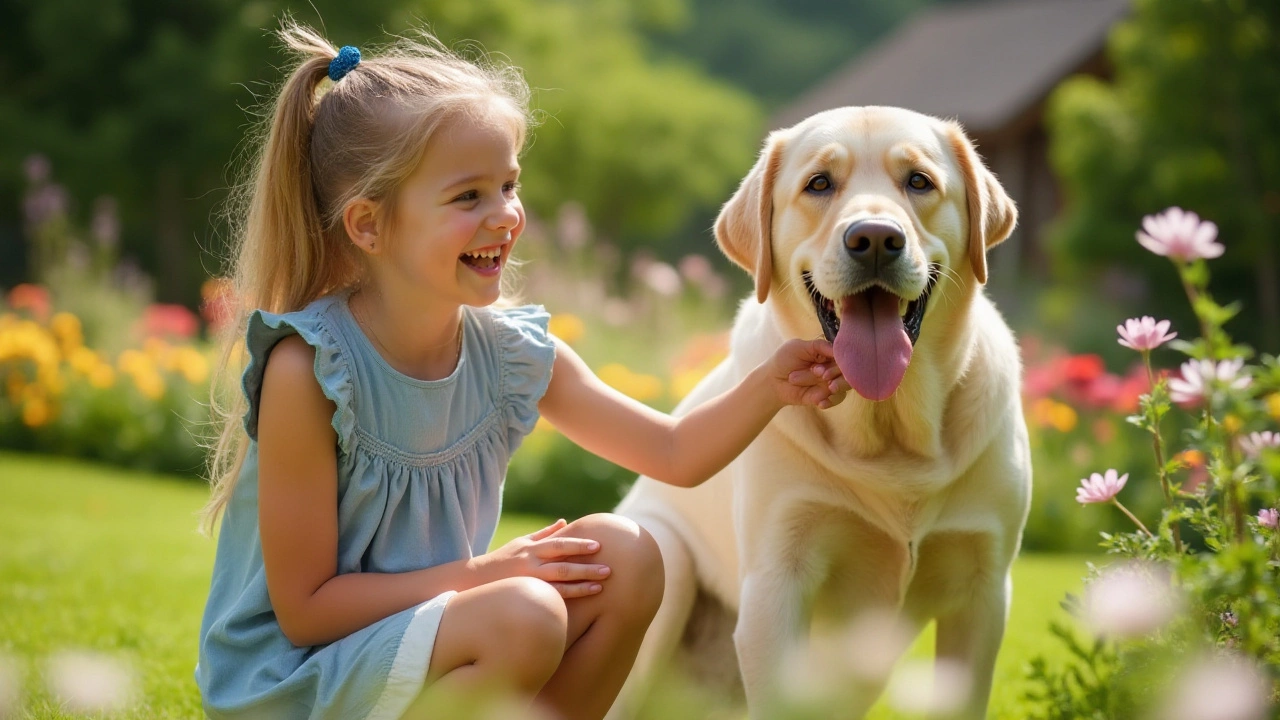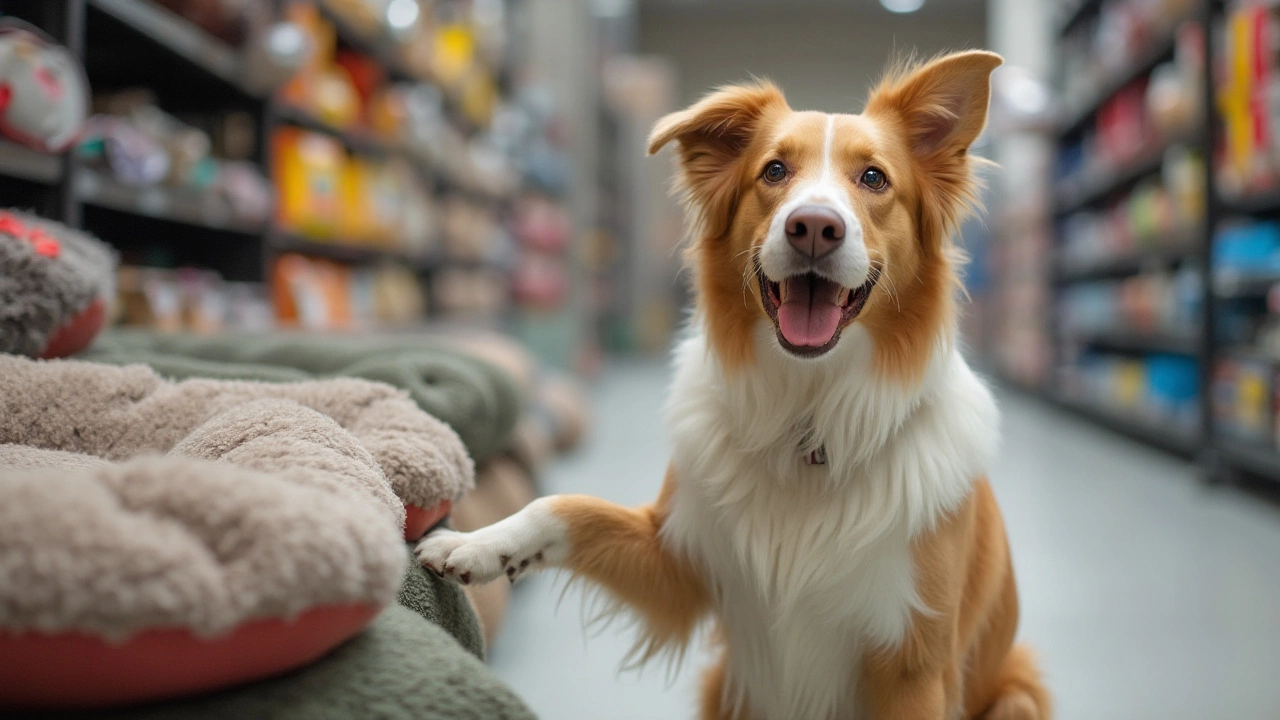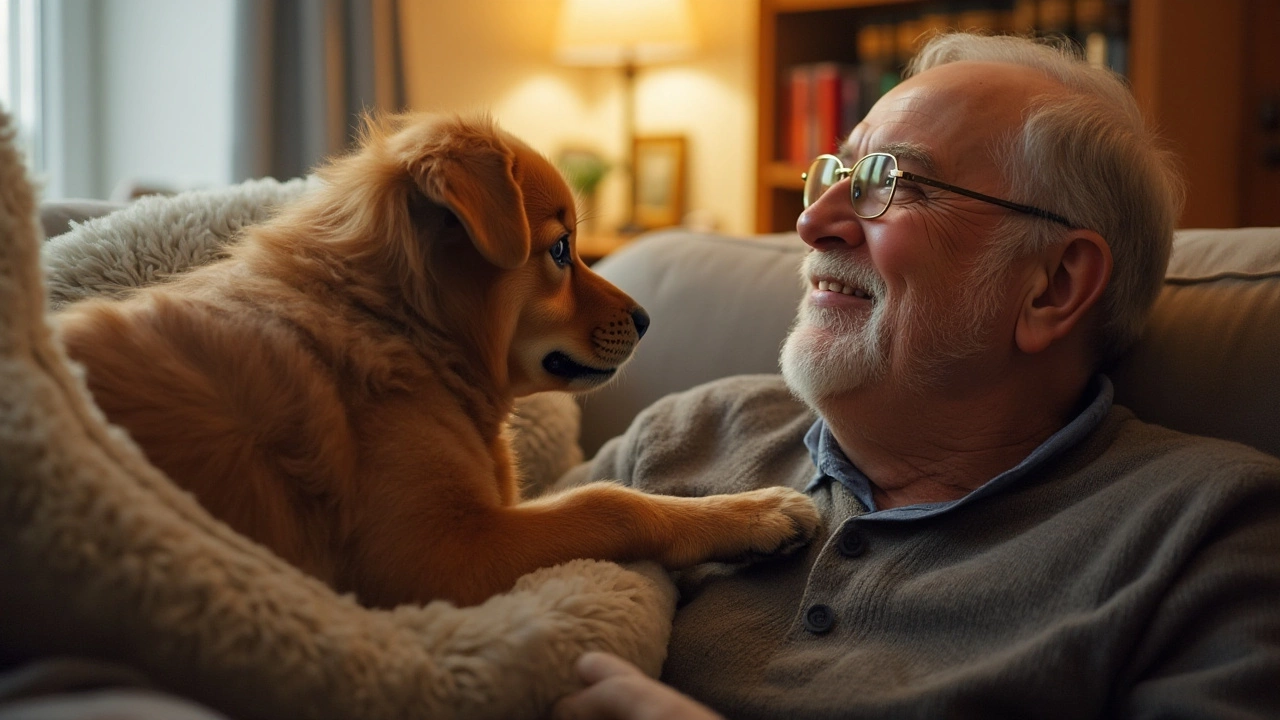If you've ever felt the comforting weight of a dog's paw resting on you, you might wonder what it truly means. Is it a request, a form of affection, or perhaps something else entirely? While each dog has its unique way of communicating, placing their paw on you is a form of expressing themselves.
Understanding these gestures can open up a new world of communication between you and your canine companion. It's about recognizing the subtle cues that reveal not just what they want, but how they feel. Maybe they're asking for attention, telling you it's time for a walk, or simply sharing a moment of connection.
This article delves into the different meanings behind a dog's paw on you, showing how you can respond and build a stronger, more empathetic relationship. Additionally, we'll look at how choosing the right dog bed plays a role in meeting their comfort needs, which can influence their behavior and interactions. Let's unlock the mystery of your dog's paw and learn how to 'listen' when they reach out with their touch.
- The Language of Paws
- Emotional Signals from Paws
- Strengthening Bonds through Communication
- Choosing the Right Dog Bed
The Language of Paws
Dogs have a unique way of communicating that transcends words—a language formed through barks, tail wags, and yes, their paws. When a dog places its paw on you, it could be saying a multitude of things, each contextually rich and emotionally layered. Some behaviorists suggest that pawing may be analogous to humans reaching out to touch someone, like tapping a friend on the shoulder to gain their attention. By understanding this gesture, you can respond more empathically to your furry friend's needs.
Paul Zak, a well-known scientist studying human-animal interactions, has observed that physical touch can increase levels of oxytocin, a hormone associated with bonding. "A dog's paw can act as a bridge of connection," he states, emphasizing that these gestures aren't random acts but deliberate attempts to communicate. So, when your pup gently places their paw on your knee, they might be seeking to strengthen their bond with you—not just looking for treats or walks.
In fact, pawing as a way of expressing needs isn't limited to affection alone. Often, dogs use their paws to signal hunger, desire for play, or even discomfort. Let's say your dog lightly scratches your arm when you haven't refilled their water bowl; it’s their polite way of reminding you what's missing. This behavior can become a foundational element in your daily interactions, allowing you to understand and meet their needs more effectively.
Moreover, not every paw placement carries the same meaning. Some pet owners notice their dogs placing a paw on them as a form of calming signal, perhaps when the household atmosphere becomes tense. If there's been an argument or a moment of stress, your dog might use their paw like a reassuring hand, reminding everyone to stay connected and calm. Knowing this can add emotional depth to your relationship with your pet.
Interestingly, some dog trainers advocate for teaching pets how to control their paw gestures, making it part of positive reinforcement training. With time, you can interpret whether your dog wants to signal "stay," "I’m anxious," or "let’s play," just based on how they use their paws. As intriguing as it sounds, mastering the art of paw communication can lead to a more harmonious coexistence, enriching both your lives. It's not just about fabricating commands; it's genuinely about deepening that unspoken connection with your four-legged friend.

Emotional Signals from Paws
Our furry friends are remarkably expressive creatures, often conveying their feelings and intentions through body language. One of the most intriguing gestures is when a dog places its paw on you. This simple act can reveal a multitude of emotions, ranging from love and reassurance to anxiety and curiosity. To the untrained eye, it might seem like any other endearing moment with your pet, yet understanding what it truly signifies can deepen your connection. Dogs, much like humans, have unique personality traits and emotional responses. By observing the context in which they use their paws, owners can better understand their pets' emotional landscape.
For instance, if a dog rests its paw gently while you stroke its fur, it might be a sign of trust and companionship, solidifying your bond. In contrast, a more urgent or repetitive tapping could signal discomfort or anxiety, suggesting that something in the environment is causing stress. Recognizing these emotional signals is essential for addressing any underlying issues that might otherwise go unnoticed. Particularly in rescue animals or those with past trauma, the gesture can indicate a plea for comfort and assurance from a trusted companion.
According to animal behaviorists, dogs may also use their paws to demand attention or as a way to initiate play. If they find their owners distracted, a playful tap can act as a gentle reminder that some quality time is due. Puppies, especially, often use their paws in this way to engage and interact with their human friends. As Dr. Karen Becker, a renowned veterinarian, once remarked,
"A dog who touches you with their paw might be saying, 'I'm here with you, and I want you to know it.'"This signifies how much dogs value your presence in their lives, creating unique moments both parties cherish.
In addition to emotional cues, dogs may instinctively use their paws in particular situations, such as feeling hungry or wanting a treat. Over time, owners often recognize their pets' individual preferences and habits, which means a paw signal might be understood within a unique human-animal friendship language. Such behavior is not only comforting but also signals that your dog sees you as a pivotal part of their life. Keeping your dog engaged and comfortable, perhaps through cozy dog beds, can be a key factor in maintaining balanced behaviors, allowing their spirits to flourish safely and joyfully.

Strengthening Bonds through Communication
Dogs have an inner world that's vividly colorful and complex, a world they often try to share with us through simple gestures like placing a paw on our knee. When we learn to read these signals, we're opening the door to deeper understanding and empathy. It's not just about interpreting their signals; it's about responding in a way that nurtures the relationship. Every interaction with your pet builds on the trust foundation, and your dog's gentle touch is one of those building blocks. Their paw might mean they're feeling vulnerable, and they're reaching out for reassurance. This requires us to be attentive, considering what our canine companion might be experiencing at that moment.
To truly strengthen the bonds, owners should spend more time observing and interacting with their pets. Emphasizing communication doesn't demand conversations but rather togetherness. Dogs are pack animals, and being present physically and emotionally cements your role as their trusted pack leader. Regular activities that engage them, be it a simple game of fetch or a walk around the block, make a difference in how they perceive their world and their bond with you. These activities become consistent communication platforms where both you and your furry friend are learning from one another.
“Dogs do speak, but only to those who listen.” – Orhan Pamuk
Interestingly, research indicates that dogs can understand human emotions by deciphering our expressions and tone of voice. Their ability to pick up on subtle emotional cues underscores the importance of being mindful of our mood and body language during interactions. Demonstrating warmth and positivity contributes to a secure environment, encouraging your dog to express themselves and seek comfort in your presence. It's also crucial to reciprocate their gestures. When they tap you with their paw, respond with a pet or a kind word. Over time, these positive interactions will forge a stronger, more resilient bond.
A healthy bond requires us to adapt and learn continuously as our dogs grow and change. As they age, their behaviors can transform, requiring new approaches to maintaining understanding. Including dog behavior training sessions tailored to their growth stages can be beneficial in maintaining effective communication. Knowledge about your dog’s specific breed and individual personality traits can guide you in adapting your communication methods to suit them best. Ultimately, it is this ongoing journey of mutual adaptation and understanding that truly strengthens the bond between owner and pet.

Choosing the Right Dog Bed
Your dog's bed is where they find their peace after a long day of play, walks, and endless tail wags. It's more than just a resting place—it's their sanctuary. Selecting the right bed can enhance their comfort and well-being, and ultimately affect their behavior and interactions. When it comes to picking the perfect bed, it's important to consider your dog's size, age, and health needs. A large dog might enjoy a spacious bed with plenty of room to stretch, while an older dog with arthritis might need an orthopedic bed that supports their joints.
Materials play a crucial role in your choice. Many dog owners swear by memory foam, renowned for its ability to mold to your pet's body, offering unrivaled support and coziness. If you're environmentally conscious, look for beds made with sustainable materials or recycled fibers. These eco-friendly options not only benefit your dog but also lessen your environmental footprint. Don't forget to consider how easy it is to clean the bed—a removable, washable cover is a practical feature that keeps your dog's sleeping area hygienic.
Understanding Your Dog's Preferences
While you might have your eye on a chic dog bed, it's vital to consider your dog's personal taste. Observe where they love to nap. Do they snuggle up in a corner or sprawl out across the floor? Some dogs prefer the security of bolsters on their beds, which provide a sense of protection, while others enjoy the simplicity of a flat mat. Understanding these preferences will help you choose a bed that they not only use but truly love.
According to Dr. Karen Becker, "Dogs, like humans, have unique sleeping styles and preferences. It's important to match their bed to their behavior for the best results."Pay attention to their sleeping habits too. If they get warm easily, a cooling bed might be the right choice, while a plush, furry bed could be perfect for those who enjoy extra warmth and luxury.
When it comes to the design, make sure it complements your living space while serving its primary function. Having a dog bed that fits seamlessly into your home's décor makes it easier to welcome it as a part of your furniture. With a bit of effort in choosing the right bed, you can improve your pet's quality of life significantly. Remember, a well-rested dog is a happy dog, and this happiness translates into positive behavior and a stronger bond with you. Taking the time to provide the perfect space for them to call their own might just reward you with more of those sweet paw touches, signaling their contentment and gratitude.
